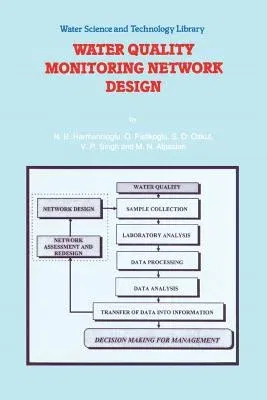In recent years, the adequacy of collected water quality data and the
performance of existing monitoring networks have been seriously
evaluated for two basic reasons. First, an efficient information system
is required to satisfy the needs of water quality management plans and
to aid in the decision-making process. Second, this system has to be
realized under the constraints of limited financial resources, sampling
and analysis facilities, and manpower. Problems observed in available
data and shortcomings of current networks have led researchers to focus
more critically on the design procedures used.
The book is intended to present an up-to-date overview of the current
network design procedures and develop basic guidelines to be followed in
both the design and the redesign of water quality monitoring networks.
The book treats the network design problem in a comprehensive and
systematic framework, starting with objectives of monitoring and
elaborating on various technical design features, e.g. selection of
sampling sites, sampling frequencies, variables to be monitored, and
sampling duration. The design procedures presented are those that the
authors have recently applied in a number of national and international
projects on the design and redesign of water quality monitoring
networks. Thus, the book covers real case studies where not only the
methods described in the earlier titles are used but also new techniques
are introduced. Where earlier methods are used, they are assessed with
respect to their efficiency and applicability to real case problems.
Audience: Essentially, the framework adopted in the book applies as
well to other hydrometric data collection networks besides those of
water quality. In this respect, it is expected that planners, designers,
scientists, and engineers who are involved in hydrometric network design
will benefit from the in-depth approach assumed in this book. It will
also be of interest to research and data centers, international programs
and organizations related to environmental monitoring. The book may also
be used as a reference text in graduate courses of water resources and
environmental engineering programs


